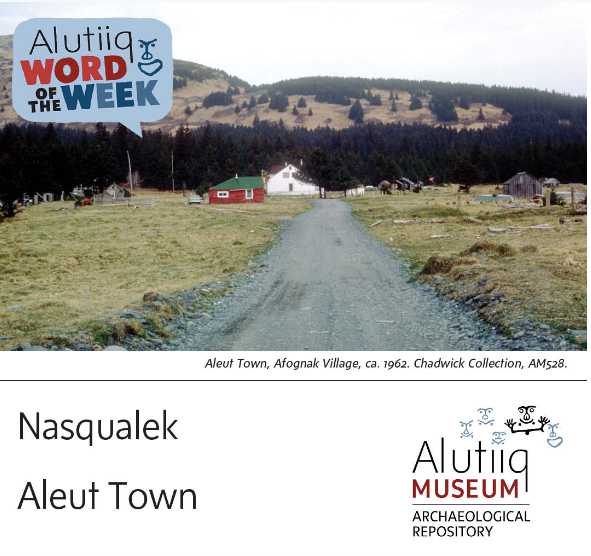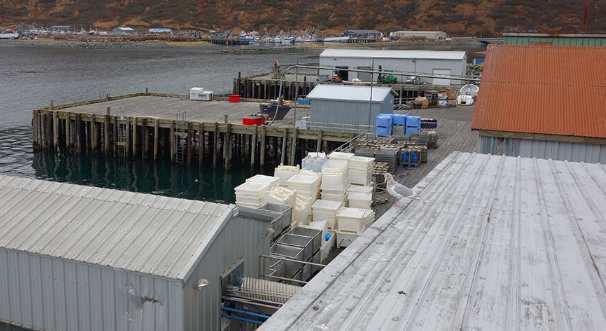
Aleut Town — Nasqualek
Cuumi suuget Nasqualegmi etaallriit. – People used to live in Aleut Town.
Afognak Village grew from a pair of neighboring towns—Russian Town and Aleut Town. These small communities were built about a mile apart on the western shore of Afognak Bay. At the south end of the area lay Rutkovsky village, also known as Russian Town or Derevnia. Established about 1830, this village was the home of Russian American Company retirees and their families. The pensioners were typically Russian men married to Native women. They lived in a row of log houses behind the beach, harvested and raised their own food, and sold any surplus.
To the north lay Aleut Town, a Native village. The Alutiiq term for Aleut Town, Nasqualek comes from a word meaning round or bulging. This may refer to the shape of the long, curving beach in front of the village. Aleut town originated as a summer settlement—a place where Alutiiq ancestors harvested salmon headed for the Afognak River. In the 1780s Russian traders built a workstation in the vicinity. In the 19th century, the community grew with an influx of survivors from the 1838 smallpox epidemic. Most of the early houses in Aleut Town were ciqlluat, Alutiiq sod homes.
The two communities were separated by a marshy area and a set of social and economic distinctions that persisted into the twentieth century. Russian Town was more affluent, and its residents were afforded a higher social standing than their neighbors. In reality, most of the people in both communities had both Russian and Native ancestry, and many families were related. Eventually, people intermarried. As such, a child living in Russian Town might have grandparents living in Aleut Town. Over time the communities merged into Afognak, a single village whose residents shared a history of living on the shores of Afognak Bay.








